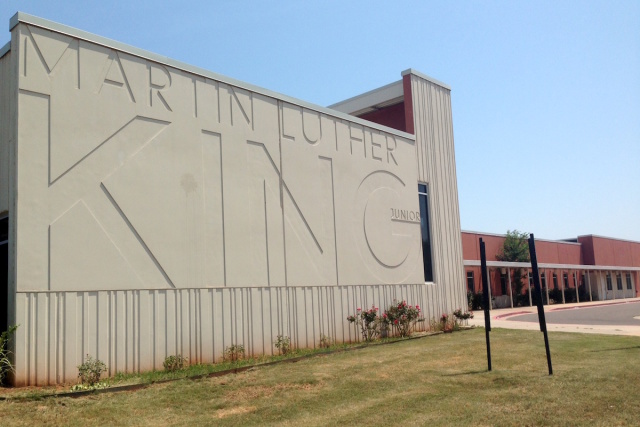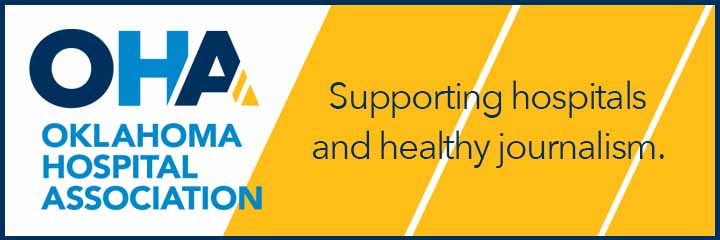

There are two big questions in regard to the KIPP plan for taking over the Martin Luther King Elementary School building. I’ve focused on the first issue of whether it would be possible for KIPP (Knowledge Is Power Program) to provide high-quality pre-kindergarten and elementary education for an entire neighborhood.
Since Oklahoma City’s KIPP has never attempted such a task, the organization should have been willing to answer some basic inquiries about whether its business model would allow it to accept and retain most, many or just a very few of the students who they haven’t previously tried to serve.
KIPP has repeatedly ducked questions ranging from its teacher attrition and management problems to its complete lack of experience in providing pre-kindergarten. Neither has it attempted to answer the single most important question in terms of whether KIPP can take over an entire neighborhood school: How many students from the neighborhood school that co-locates with KIPP — Moon Elementary School — are accepted, retained and graduated from their “No Excuses” charter school in eighth grade?
KIPP’s unwillingness to address its ability to fulfill its promises is troubling. It accentuates the importance of the second crucial set of questions regarding whether the Oklahoma City School Board would be capable of preventing KIPP from pushing out unconscionable numbers of students.
A look at the books
KIPP’s tax and audit records and applications also open the door to more questions about the credibility of its promises.
Tax records showing that OKC KIPP’s expenses exceeded revenue for five of the last nine years raise concerns about the ability of KIPP to expand competently. Recently, it needed a $90,000 “emergency funding” grant from the Inasmuch Foundation to avoid an end-of-the-year deficit.
The Oklahoma City KIPP has about one-tenth of the same net assets/reserve funds as the Tulsa KIPP. The OKC charter also spends a greater percentage of its funds than its Tulsa counterpart on management and general expenses. In fact, from FY 2012 to FY 2014, the OKC KIPP’s non-instructional costs ranged from 43.2 percent to 48.6 percent. Its school with fewer than 300 students employs four principals and assistant/vice principals whose total salaries exceed $370,000.
In FY 2014, KIPP Reach spent more than $167,000 on travel and activities. Its staff directory lists only 16 teachers, but it names a chief academic officer, an academic operations manager, an office manager, a development director and a data manager. Given such staffing for such a small school, the question once again arises as to why KIPP can’t answer basic questions, such as how many of its students come from Moon and nearby schools, and how many come from other districts. It also raises the question of why KIPP keeps providing factually incorrect information about its per-student funding (such as the misleading claim of $4,800 per pupil funding), why it posted inaccurate suspension data, and why it took so long to get answers to questions about its attrition rate.
KIPP Reach’s 2014 tax return shows that its spending comes out to $10,000 per student, which is around $1,400 more than OKCPS spends. (The 2013 return showed around $9,000 per student.) That doesn’t count the free rent it receives from OKCPS, nor the savings it accrues by not providing transportation, sports or support services for nearly as many high-challenge students. These financial details are crucial because KIPP argues that it outperforms OKCPS for less money.
High rates of suspension and attrition
Another confusing element of KIPP’s performance metrics was highlighted in a letter — issued March 16 during both the charter expansion and the disparate suspension controversies — which said KIPP had made a clerical error and did not have the nation’s third-highest suspension rate (71 percent) for black charter school students in 2011-2012.
KIPP now claims that “only” 45 percent of black students were suspended, and that it has now reduced the suspension rate for blacks to 25 percent; however, the suspension rate for special education students was 126 percent.
Meanwhile, KIPP belatedly admitted at an OKCPS board meeting that it posts attrition rates of 15 percent per year. Its own documents show that it has also had attrition rates up to 26 percent per year, meaning that it often has an attrition rate exceeding 60 percent over a student’s four-year career. Four-year attrition rates for low-income and special education students are about 70 percent.
Unlike neighborhood schools, KIPP doesn’t accept many transfers to fill empty seats. This also inflates test scores. Moreover, the data included in its successful application for being named a Blue Ribbon School may provide the most important explanation of why KIPP posts such high scores. We can split hairs over KIPP’s claims that between 9 percent and 13 percent of its students are on special education IEPs and the 5.6 percent reported last year by the OKCPS (KIPP’s locally reported numbers are also different than what it reports to the federal OCR), but data on the numbers of students who are tested in the spring explain that sort of discrepancy — and much more.
From 2006 to 2011, KIPP tested an average of 80 fifth-graders in reading. By eighth grade, during those years, only seven special education students were tested in reading. In other words, attrition among special education students in reading was so extreme that their eighth-grade numbers dropped to an average of only 1.4 grade students with alternative assessments in four years! None of the eighth-grade special education students was reported as passing.
‘Avoid a debacle’
All of this brings us back to KIPP’s promise to admit not only all students from a neighborhood school that has nearly three times as many special education students.
If a little data crunching yields so many inconsistencies in regard to KIPP OKC’s finances, suspension rates and retention rates, how can we believe the lofty promises being made by the organization as it seeks to expand its student population.
By the look of things, KIPP will have to find a brand-new way to retain enough of them to avoid a debacle.




















